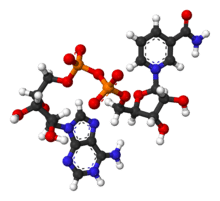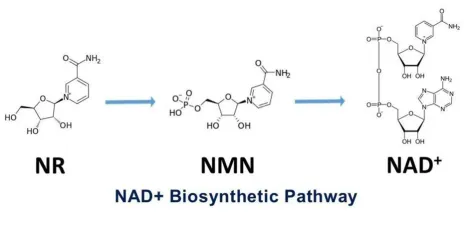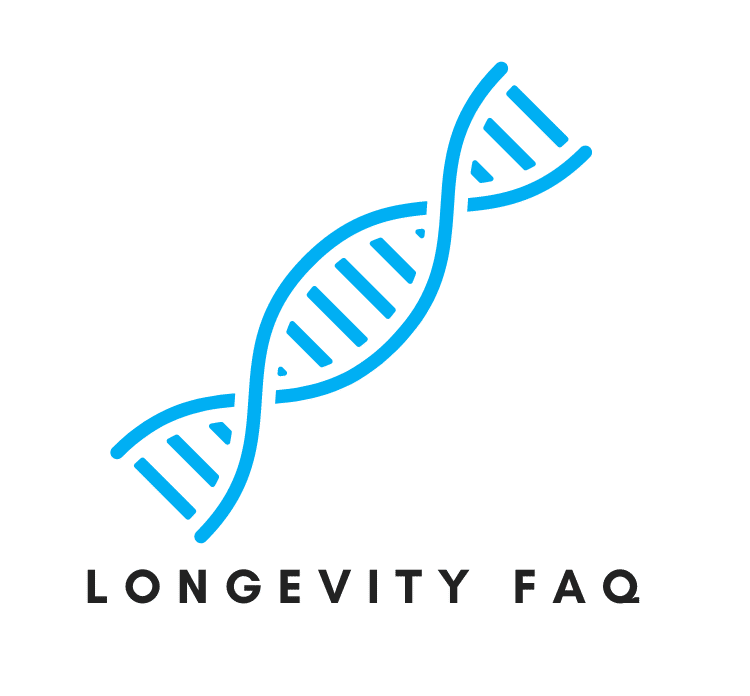
NAD, or nicotinamide adenine dinucleotide, is a coenzyme that is found in all cells and is essential to metabolism, in short NAD is critical in the chemical reactions that give all cells their energy, no or low NAD then cells don’t get the energy they need to function correctly.
More technically its significance lies in its role in redox reactions, where it carries electrons from one reaction to another. NAD exists in two forms: NAD⁺ and NADH, with the former serving as an oxidizing agent that accepts electrons from other molecules and becomes reduced, forming NADH, which can then be used as a reducing agent to donate electrons. This electron transfer is the primary function of NAD and plays a critical role in metabolism.
Additionally, NAD is used in other cellular processes, particularly as a substrate of enzymes in adding or removing chemical groups to or from proteins in posttranslational modifications. Due to its importance, enzymes involved in NAD metabolism are targets for drug discovery.
NAD⁺ has two general reactions in the human body: helping turn nutrients into energy as a key player in metabolism and working as a helper molecule for proteins that regulate other cellular functions. These processes are vital as NAD⁺ levels decline with age.
NAD can be synthesized de novo from simple building blocks like tryptophan or aspartic acid or derived from nutritive compounds like niacin. Moreover, some NAD is converted into the coenzyme nicotinamide adenine dinucleotide phosphate (NADP), which is a cofactor in anabolic metabolism.
The NAD⁺ chemical species’ superscripted addition sign reflects the formal charge on one of its nitrogen atoms; this species is a singly charged anion – carrying a (negative) ionic charge of 1 – under conditions of physiological pH.
Should I Supplement with NAD⁺ or a Precurcor like NMN or NR
While we want to increase levels of NAD⁺ in our bodies, supplementing directly with NAD⁺ is not the answer; the reason is that NAD⁺ is a large molecule, so it’s always broken down in the stomach; the solution is to supplement with a precursor like NMN or NR.
There are several NAD⁺ precursors; these include:
- Nicotinamide Riboside (NR)
- Nicotinic Acid (NA)
- Nicotinamide (NAM)
- Nicotinamide Mononucleotide (NMN)
- Tryptophan (TRP)
The latest research suggests that supplementing with NMN is the most effective way of boosting NAD⁺, much better than supplementing with NR, as you will see in the diagram below as NMN is closer in the NAD⁺ Biosynthetic Pathway, in short NR first needs to be converted into NMN before NAD⁺.

NAD History and Research
The discovery of NAD⁺ can be credited to the British biochemists Arthur Harden and William John Young in 1906, who identified it as a nucleotide sugar phosphate by Hans von Euler-Chelpin. Otto Heinrich Warburg advanced the science in the 1930s by researching NAD+ and its role in metabolic reactions. Later, Conrad Elvehjem discovered that niacin is used to synthesize NAD⁺.
Recent research has also shown that NAD⁺ is critical in promoting longevity. Studies have found that boosting NAD⁺ levels can improve mitochondrial function, increase energy production, and enhance DNA repair. Furthermore, NAD⁺ has been shown to activate sirtuins, a group of enzymes associated with aging and longevity.
In addition to its role in metabolism and cellular processes, NAD⁺ is also involved in various disease states. For example, NAD⁺ levels decrease in several age-related diseases, including Alzheimer’s disease and Parkinson’s disease. Moreover, NAD⁺ has been shown to play a protective role in cardiovascular diseases, such as heart failure and hypertension.
« Back to Glossary Index